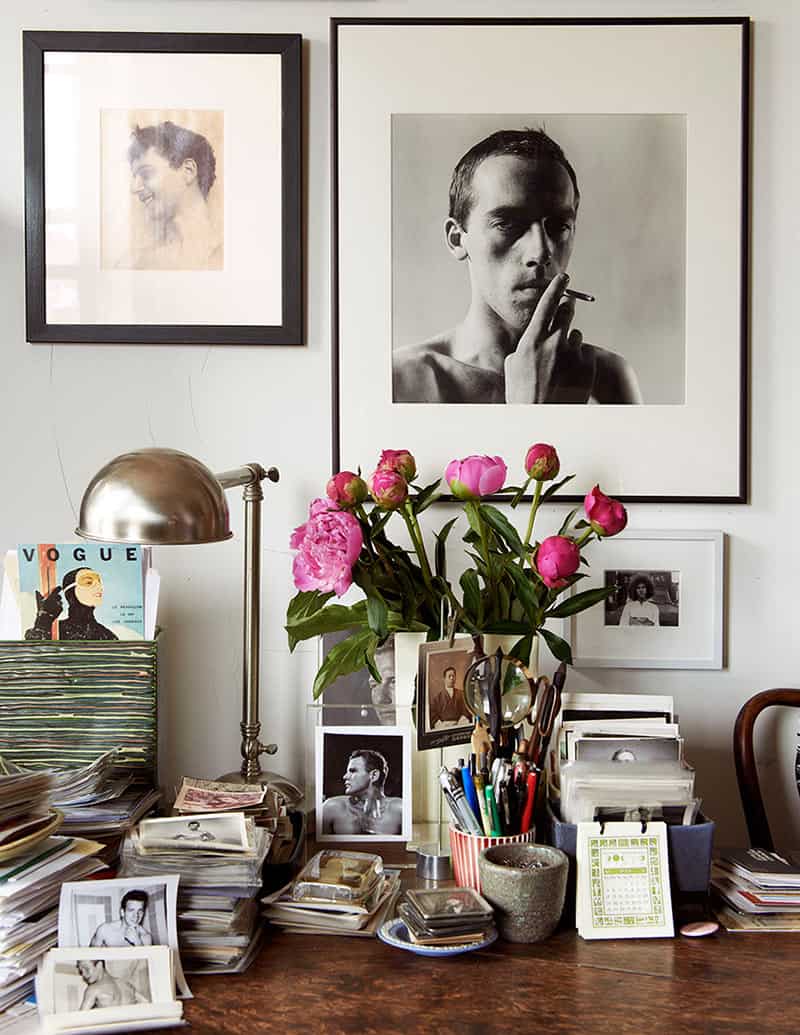Profile: Vince Aletti
by Kim Levin
Though short and to the point, the ten or so capsule reviews for art shows in the opening pages of the New Yorker each week are probably among the most widely read in the city, if not the nation. This is where tourists and seasoned art buffs alike look for serious picks from an esteemed reviewer, and so they may carry even more clout than long-time critic Peter Schjeldahl’s considerably longer takes on art around town.
True to its clubby reputation, the New Yorker is loath to reveal the names of all who write these reviews, but the name that crops up most often as a byline elsewhere in the magazine is Vince Aletti, who has written about photography exhibitions for “Goings on About Town” almost every week since 2005. Aletti, now 70, started his career as a pioneering music critic for Rolling Stone in 1968, where he became the first to take disco seriously. He moved to the Village Voice to write about music toward the end of the 70s, became freelance editor of the Centerfold (“an opinionated survey of the week’s events”) and gradually assumed the duties of the art editor at the Voice. Photography became his beat at both the Voice and in reviews for Artforum long before he moved to the New Yorker.
Aletti credits his interest in photography to his father and his upbringing in a house that included a dark room, in Glenside, a small town near Philadelphia. “My father was an amateur photographer,” he says. “And that gave me a certain early connection to the allure and mystery of seeing a print appear on a piece of white paper. I grew up with photography books, books on the history of photography. It gave me a grounding. I don’t think I would have written about photography had I not been at the Voice, which allowed you to follow your enthusiasms.”
One early influence on his work was his East Village neighbor Peter Hujar—known for his haunting portraits of Susan Sontag, Candy Darling, Divine, and David Wojnarowicz. “Looking at pictures with him made me think about the photographer as a working person, someone who didn’t just make art but earned a living. I did critical profiles of photographers for the Voice. I wasn’t going to take on someone like Larry Clark, but rather people who were just getting started, such as Dawoud Bey, Carrie Mae Weems, and Sally Mann.”
He spends at least two and a half “good working days” going to exhibitions in Chelsea and elsewhere. His criteria? “First the show should be on some level excellent or at least well done, and should be something I haven’t seen before. Mostly it’s the idea that something has weight and value and speaks to me. If it’s provocative on some level, that can be discussed. But sometimes I go into a gallery and just draw a blank. I don’t have anything to say about it. It’s kind of rare, but I occasionally think: there’s nothing for me here.”
Aletti has also organized groundbreaking photography exhibitions, including “Male” at White Columns (2008), which explored through his own collection the infinite possibilities of masculinity. In 2009 he curated a series of exhibitions on fashion photography at ICP, including “Avedon: Fashion: 1944-2000,” co-curated by ICP curator Carol Squiers, the first show to focus on Avedon’s fashion work. The most satisfying, he says, was the exhibition called “This is Not a Fashion Photograph,” which included images from Walker Evans, Malick Sidibe, Nan Goldin, and Francesca Woodman, among others.
For all his years of writing about photography, music remains Aletti’s first love. “But photography is very close to my heart,” he says. Part of the pleasure of his job is the chance to write about shows that are currently up and running. How has the work of photography changed in our digital era? “Luckily it’s not something I have to think about very much. Darkroom printing is almost obsolete and that disturbs me. I think all the options should be open. The ability to manipulate an image, the idea that anything is possible, certainly throws a curve into writing about photography. How real is it? I’m judging the image not the technique.”
He works at home. He knows Peter Schjeldahl from their days at the Voice but has never met Calvin Tomkins, famed for his lengthy profiles in the New Yorker. “No one goes to the office, ever, as far as I know. We all have the luxury of being able to file from home.”
bio: Kim Levin has written about art for ARTnews, the Brooklyn Rail, Arts Magazine, and the Village Voice, where Vince Aletti was her editor.
Photo credits: Jason Schmidt.

Thanks for your article — I’ve wondered who writes these pithy capsule reviews! (I think Martha Schwendener used to write some, before she got picked up by the New York Times…I’m glad to learn that different people write about different genres/media of art.)
Excellent piece by Kim Levin, focusing on Vince Aletti and the art that inspires him to write as opposed to the art that doesn’t.